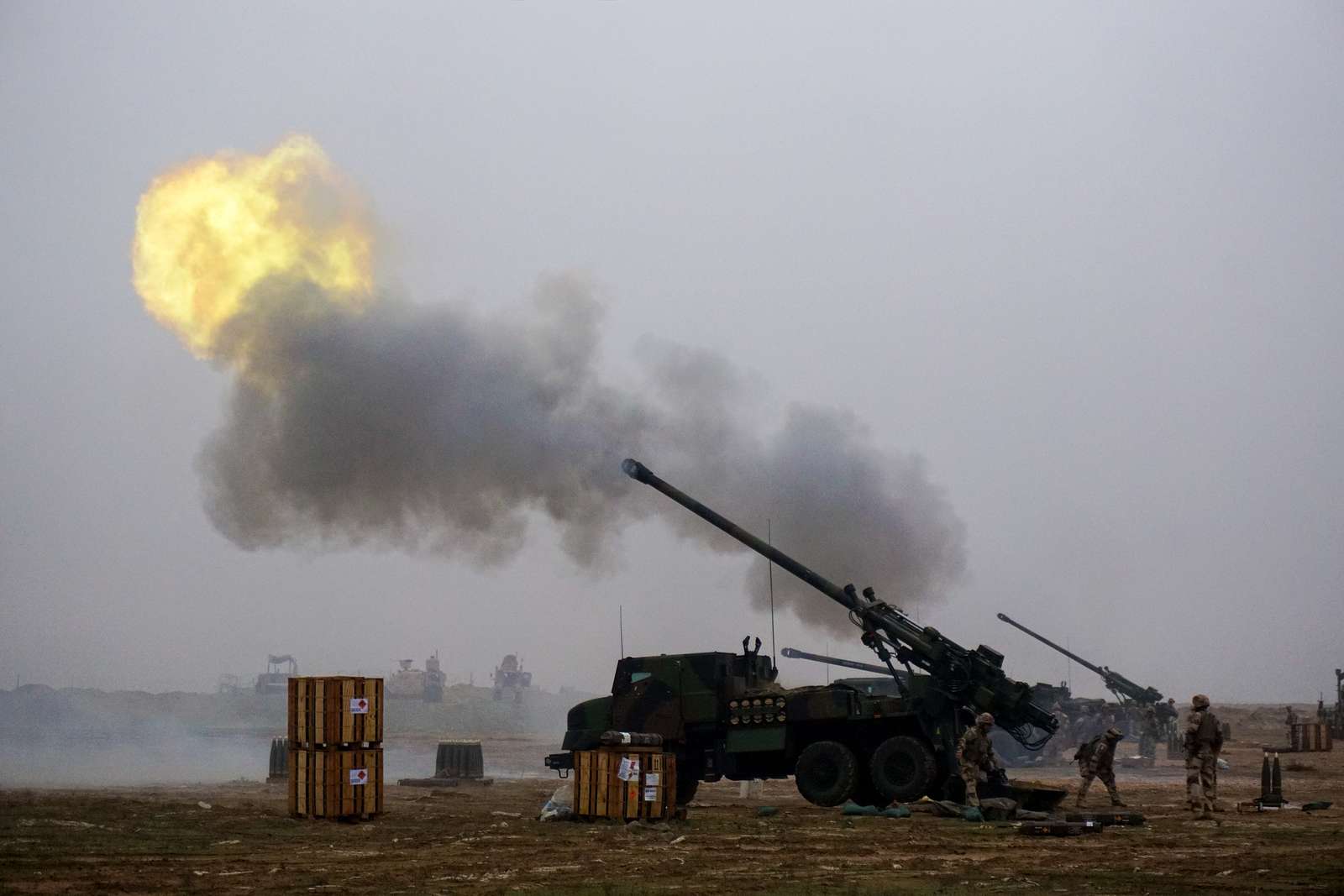
In the assessment provided by French activist Xavier Moreau, the Ukrainian military lacks adequate “conventional ordnance” for their French-supplied self-propelled howitzers, known as the Caesar. Moreau specifically refers to the long-range ammunition, capable of reaching distances of up to 40 kilometers. He highlights the costliness of these munitions, their unavailability in France, and the necessity for Paris to allocate additional funds to Germany for their production.
A video interview released by Russian media outlet RIA Novosti features Moreau, who impressively communicates in Russian, elaborating on the challenges faced by the Caesar howitzers in Ukraine. He asserts that the Caesar SPH (Self-Propelled Howitzer) is ill-suited for the ongoing conflict, foreseeing their rapid operational failure and irreparability. Moreau explains that repairing a Caesar howitzer requires its complete disassembly and subsequent reassembly, a process he labels as the “secret of Caesar.”
Moreau, currently situated in the self-proclaimed Donetsk People’s Republic (DPR), is a French activist and the proprietor of the security firm Sokol Holding. The company employs former French and Russian military personnel who have served in elite units. Prior to his current engagement, Moreau held the position of an officer in the French elite units, specifically serving as a paratrooper. He has authored two books, namely “The New Great Russia: From the Collapse of the USSR to the Return of Vladimir Putin” and “Ukraine – Why France was Wrong.” It is important to note that Moreau possesses dual citizenship, being both French and Russian.
Notably, there has been a declining discourse concerning the presence of French Caesar howitzers in Ukraine throughout the year. This can primarily be attributed to the absence of large-scale artillery barrages or offensives conducted by both Russia and Ukraine. Rather, a significant portion of the ground artillery equipment remains in a state of readiness, commonly referred to as “standby” mode.
The veracity of Moreau’s statements may have some merit, considering Ukraine encountered issues with the performance of Western-supplied self-propelled howitzers, including the French Caesar, last year. Ukrainian officers, as reported by BulgarianMilitary.com, have consistently highlighted the problems plaguing this artillery system.
Instances have been documented where Ukrainian soldiers exerted such excessive strain on the howitzers during daily operations that their barrels ruptured. Analysts pointed out that a significant portion of the artillery provided to Ukraine was not originally designed to withstand such intense demands. This refers to the scenario where a single howitzer would fire hundreds, and in some cases up to 1,000, rounds per day.
However, it is evident that the Caesar howitzer did not encounter issues related to muzzle or load intensity. Instead, the French weapon faced challenges with its ammunition. Frequent reports indicated that the fire control system struggled to identify the projectiles loaded into the howitzer, resulting in errors within the system’s software.
While the specific type of shells supplied to Ukraine for the Caesar self-propelled artillery remains undisclosed by Moreau, he asserts that they are not the projectiles known for their 40-kilometer range, which is typically associated with the Caesar system.
In Ukraine, a total of 18 (12+6) Caesar self-propelled howitzers were delivered by the end of October 2022. France conducted training for Ukrainian combat units to familiarize them with operating the Caesar system. The Caesars deployed in Ukraine are based on a 6×6 chassis.
In addition to France’s contribution, Denmark has committed to supplying at least 19 Caesars from its own inventory or from its acquisition from France. These 19 units have already been delivered to Ukraine, bringing the total number of Caesar units in Kyiv’s possession to 37. Furthermore, an additional 12 units were promised by Paris in April of this year.
The 155mm self-propelled howitzer Caesar, developed by the French Nexter Group, is available in two chassis variants: 6×6 and 8×8. It offers exceptional mobility, capable of covering a distance of slightly over 600 km at an average speed of 50 km/h with a full tank of fuel. The maximum speed of the howitzer is 80 km/h.
The cabin of the Caesar is armored to provide overprotection at STANAG 4569 Level 2. The entire howitzer, when deployed for combat, weighs just over 18 tons, measures 10 meters in length, and stands nearly four meters tall. In addition to the cannon and chassis, the French system incorporates an autonomous weapon system, an inertial navigation unit, an initial speed radar, a ballistic calculator, and the ability to integrate with any Command, Control, Communications, Computers, and Intelligence (C4I) system.
Equipped with a 155 mm/52 caliber smoothbore artillery piece, the Caesar can fire up to six shells per minute. Its maximum range ranges from 4.5 to 40 km, which can be extended to 50 km with the assistance of rocket-assisted projectiles. The howitzer features a semi-automatic loading system, as well as automatic aiming and weapon system adjustment capabilities. It can utilize various types of ammunition, including standard NATO 39/52 caliber or Extended Range Full Bore (ERFB) rounds, as well as intelligent ammunition. The howitzer can be deployed within 60 seconds, and its crew typically consists of 4 to 5 personnel.
The 155mm Caesar self-propelled howitzer has seen action in various French missions in Afghanistan, Lebanon, Mali, and Iraq. It can be transported via aircraft such as the C-130, A400, IL76, and C-17, and can also be airdropped by these aircraft.





